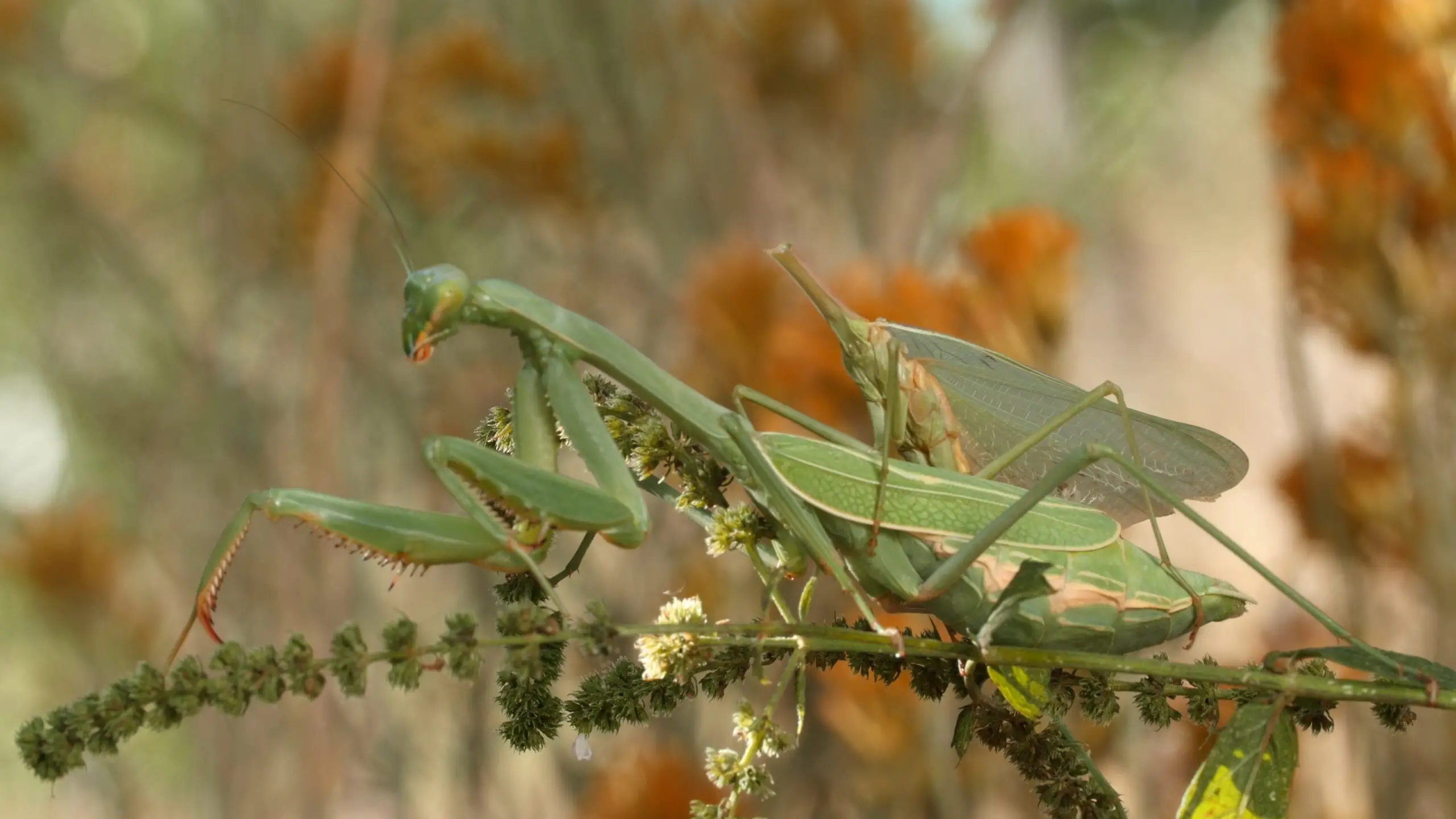Praying mantis is invertebrates. They have segmented bodies and they rely on flesh for survival hence they are carnivores.
Their name evolves from their front legs that are bent and held together at an angle that suggests the position of praying.
Male and female praying mantis is sexes of praying mantis. They have certain similar characteristics but they still have some differences.
It is not easy for many of us to differentiate between male and female praying mantis. Many referring to the sexes interchangeably.
So, what is the main difference between male and female praying mantis? The male praying mantis has eight abdominal segments and several small segments towards the end of the abdomen while the female praying mantis has six abdominal segments and a large final abdominal segment.
On this page, you can learn how to distinguish male praying mantis from female praying mantis and their similarities.
You May Also Like: Difference between Vertebrates and Invertebrates

Comparison Table (Male vs Female Praying Mantis)
| Basic Terms | Male Praying Mantis | Female Praying Mantis |
| Body size | They are small in body size. | They are large in body size. |
| Role | They deposit sperms in a special chamber near the tip of the female’s abdomen. | They lay eggs. |
| Body type | They have slender bodies. | They have stouter bodies. |
| Wings | They have longer wings. | They have comparatively shorter wings. |
| Ability to fly | They are able to fly. | They are not able to fly. |
| Antennae | They have longer and thicker antennae. | They have shorter and smoother antennae. |
| Abdominal segments | They have eight abdominal segments. | They have six abdominal segments. |
| Final abdominal segment | They have several small segments towards the end of the abdomen. | They have one large final abdominal segment. |
| Cannibalism behavior | They do not exhibit cannibalistic behavior. | They exhibit cannibalistic behavior. |
What is Male Praying Mantis?
The male praying mantis is smaller than the mating pair of praying mantis. It leaps on the females’ back so that it may deposit its sperms in a special chamber near the tip of the females’ abdomen.
It has eight abdominal segments and several small segments towards the end of the abdomen. It can be viewed from the underside of the body.
They have longer and thicker antennae. It has longer wings and this enables them to fly as opposed to their female counterparts.
The male praying mantis does not exhibit cannibalistic behavior hence they are not harmful to their fellow female counterparts.
They are small in body size and this gives their female counterparts an easy time to feed on them after mating.
What is Female Praying Mantis?
It is a larger insect in the mating pair. They exhibit cannibalism behavior where they eat their male counterparts after copulation.
Its body is stockier. It has six abdominal segments with the final segment only one large segment, unlike their male counterparts which have several small segments in the final segment.
Their nymphs have hair-like antennae, unlike the adults which have smoother antennae. They have shorter wings hence they are unable to fly, unlike their male counterparts which can fly due to their long wings.
Their body weight cannot allow them to fly. Their bodies are stockier making them heavier hence not able to fly.
Main Differences between Male and Female Praying Mantis
- The male praying mantis is smaller in body size while the female praying mantis is larger in body size.
- The male praying mantis has long wings while the female praying mantis has short wings.
- Male praying mantis can fly while female praying mantis cannot fly.
- The male praying mantis has a slender body while the female praying mantis has a stouter body.
- Male praying mantis deposits sperms in a special chamber near the tip of the females’ abdomen while the female praying mantis lays eggs.
- The male praying mantis has longer and thicker antennae while the female praying mantis has shorter and smoother antennae.
- The male praying mantis has eight abdominal segments while the female praying mantis has six abdominal segments.
- The male praying mantis has several small segments in the final segment while the female praying mantis has one large final segment.
- Male praying mantis does not exhibit cannibalism behavior while female praying mantis exhibit cannibalism behavior.
Similarities between Male and female Praying Mantis
- They are the sexes of praying mantis occurring s a result of sexual dimorphism.
- They both belong to the order Mantodea.
- Both have triangular heads with bulging eyes.
- Both have elongated bodies with or without wings.
- Both have a pair of antennae.
- Both have enlarged forelegs.
- Both have a common posture hence the name praying mantis.
Conclusion
Male and female praying mantis is sexes of praying mantis. They have similar characteristics and the same morphological structures.
However, they are different from each other. The male praying mantis has eight abdominal segments with the final segment having several small segments while the female praying mantis has six abdominal segments with the final segment having one large segment.
More Sources and References: